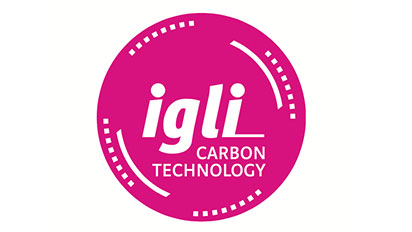medi USA, the U.S. subsidiary of the German company medi, is continuing to bring innovations to its igli line of carbon fiber insole products, with a particular emphasis on the brand’s roots in pediatric orthoses.
2016 has proven to be yet another standout year as medi USA pursues its ongoing mission to bring new, technologically innovative products to the market through continuing education and content that helps practitioners provide better and more comprehensive solutions to their patients.
Ed Wilbourne, senior category manager in the Footcare Division for the Whitsett, NC-based company, has acknowledged the importance of focusing on education in addition to product development. This has led to a marketing campaign that ran a special section regularly in LER, as well as additional expansion of materials on its standalone website, igliusa.com.
“The website is a source of information and education for both clinicians and patients,” Wilbourne said. “People go there to learn about different conditions and igli products that have worked well for others. Every other month, the site features a new video in case study format that teaches clinicians and patients about common conditions, such as plantar fasciitis, hallux rigidus, and adult-acquired flatfoot, and demonstrates how igli carbon orthoses are used to correct the problem or alleviate pain.”
The other part of this recent effort consisted of creating a continuing education materials library, which was accomplished with a medi USA grant. This allowed sponsored content to be published monthly in LER throughout 2016 in a special “Orthotics for the Win” section (lermagzine.com/forthewin), which investigated and reported on important topics like excessive pronation, metatarsalgia and sport-specific applications.
The igli line comprises a series of advanced, easily customizable carbon fiber insoles designed to be quickly adaptable in a clinician’s office to accommodate a patient’s activities and expectations. A unique aspect of the igli insoles is their carbon “clip,” which is roughly three-quarter length and features thin incisions that allow a balance of control and flexibility. The clips are heat-moldable at temperatures from 200-220° F.
“The strategic incisions allow the clinician to control the elements of foot motion without having to put the patient into a restrictive or difficult-to-wear product,” Wilbourne explained.
Several circular pads of varying densities are adhered to the bottom of the insole with Velcro; these can be repositioned in the clinic to optimize biomechanics.
As noted, Wilbourne is particularly enthusiastic about the changes in the pediatric line, which have improved and expanded upon the igli Junior model.
“The product’s adaptability is even more important for young patients, because they’re growing rapidly,” he said. “You want to allow their foot to function in a normal pattern while controlling other factors such as pediatric flatfoot.”
The emphasis on pediatrics reflects the foundation of the igli line, Wilbourne said.
“The ability to have a foot diagnosed and a need addressed instantly, with postings that are easily adjusted at the patient’s first visit, is the core idea behind igli products,” he said. “We are giving clinicians something they can easily customize, without having to take tests and scans, and have the patient walk out with the product. These new insoles take the current model to the next evolutionary stage.”
The pediatric products will now be identified by color; for example, the new igli Junior Orange is similar to the original Junior model, including the same deep heel cup, but features a slight recess under the hallux for comfort. It also has a 1-mm layer of EVA (ethylene vinyl acetate) that covers the bottom of the carbon fiber clip and protects it from dirt, sand, and other abrasive substances kids get into that can damage carbon. The new models also feature polyurethane postings, which provide better cushion and resilience than the earlier EVA versions.
The igli Junior Orange, designed to be functionally equivalent to the existing model, will start at European size 19 and top out at 34 (fits children aged about 2-8 years). The igli Junior Blue C+ is a heavier-duty model with stiffer carbon that runs from sizes 25-40 (fits children aged about 3-12 years), and is intended for bigger children or special applications requiring a more rigid platform.
“We’ve made the changes for a variety of reasons,” Wilbourne said. “One is durability; we want them to withstand the abuse kids give them.”
In the adult arena, the igli Active is now as popular as the Allround, and the two products are the company’s best sellers, both in Europe and the US.
“The Active is similar to the Allround in that it is easy to adjust,” said Wilbourne. The big difference is that the Active has a foot-orthotic interface of softer, trilaminate PPT that’s more accommodating, whereas the Allround is firmer.”
The other igli product that’s done particularly well since its introduction is the Heel Spur Light, which uses a dual-durometer insole and a soft silicone insert under the sensitive area of the calcaneus, and has shown particular appeal for patients dealing with plantar fasciitis and related conditions involving heel pain.
Additional models in the line include the Control, for those with hallux rigidus and other arthritic conditions; the Comfort, which offers extra padding under the metatarsals and is targeted at those who spend a lot of time on their feet; and the Hardboot, for rigid sports applications such as ski boots. For situations requiring tighter-fitting shoes, such as soccer or business use, there are the igli Slim and Business models.
Cary Groner is a freelance writer in the San Francisco Bay Area.
Article sponsored by medi USA.










